7,000+ readers. Months of silence. It’s time to change that.
Hey growth folks!
If you’re reading this, it means you subscribed to The Growth Mind, my newsletter on growth. But for a while, I’ve been silent.
Since then, I’ve been deep in the trenches, working at Rayon, a fast-growing product-led startup, where I built SEO at scale, Product-Led Sales automation, and growth loops. Real hands-on experience refining what works (and what doesn’t) in a PLG motion.
But I’m back - with a new focus.
I’m launching as a Fractional Growth Lead, helping product-led startups scale with sustainable, full-funnel strategies (more info here: www.pierrejeanhillion.com).
And I’m doubling down on high-value content:
This newsletter is now weekly, packed with insights and playbooks from the strategies I’ve tested over the past few months.
More deep-dive LinkedIn content every week, breaking down key growth topics.
And today, let’s kick things off with a step-by-step guide to scaling a Product-Led Sales funnel.
It’s good to be back! 😎
How to scale a Product-Led Sales funnel
1. Relying only on Product-Led Growth is harder than you think for a B2B company.
Before we start, a quick recap of the 3 classic growth models companies can adopt:
I’ve always been a huge fan of product-led growth (PLG) models.
You don't need a sales team if you’re truly 100% PLG. Scalability is high, costs are lower.
But at some point, being 100% PLG in B2B gets harder as you scale.
ACV (average contract value) is limited: Selling contracts over 5,000€ without sales intervention is hard.
Expansion is harder: Without an account executive/sales involved, expanding a contract to an entire team, or new department, is harder.
Consequently, you need high volumes to scale: On average, freemium self-serve products (eg. Notion, Typeform) monetize 3 to 8% of their users. It means you need high volumes at the acquisition step of the funnel to generate meaningful revenue.
Let’s break this down with an example:
Imagine a SaaS company with the following assumptions:
Annual Recurring Revenue (ARR): $5M
Free-to-paid conversion rate: 5%
Pricing: $30/month ($360/year)
✅ In a perfect world with no churn:
To reach $5M ARR, this company would need:
13.9K paying users
278K free users
That’s already a significant volume.
🚨 Now, let’s introduce churn.
Let’s say this company had no churn until today and now just wants to maintain its $5M ARR.
With a 3% monthly churn, it will lose 5K paying users per year.
To stay at $5M ARR (not grow, just maintain), this company must now acquire 100K new free users per year.
Just to avoid shrinking. See the challenge?
Here’s the table I’ve built for this example if you want to play around with the numbers:
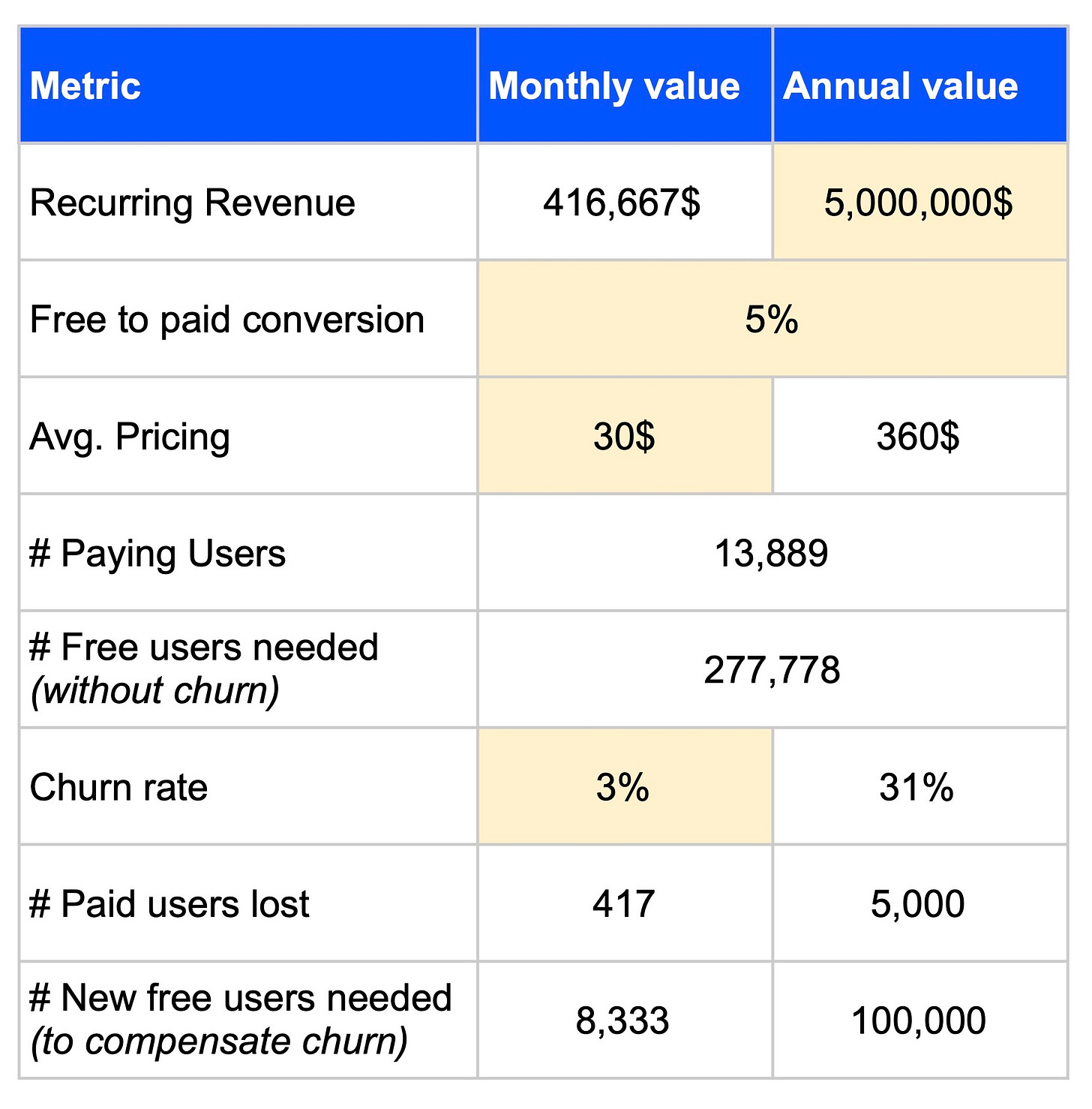
As you’ve seen, scaling purely through PLG becomes exponentially harder over time.
So how do you solve these limitations while keeping a product-driven approach? That’s where Product-Led Sales (PLS) comes in.
2. Introducing Product-Led Sales (PLS): The path to counter bad PLG effects
Product-Led Sales (PLS) is a growth strategy that leverages product usage data to identify, qualify, and convert high-intent users into paying customers. Unlike traditional sales models, where outreach happens cold, PLS focuses on users who have already engaged with the product and shown buying signals.
PLS is generally used by PLG companies on top of their self-serve funnel, by introducing human interaction at the right moment, for high-value leads (enterprise accounts or power users).
PLS is the bridge between self-serve PLG and high-touch B2B sales. It has 3 main advantages:
Increases free to paid conversion: by focusing on engaged users and using human assistance. As you can see on the free to paid conversion benchmark below, freemium companies using a sales-assist model monetize roughly 2x better than those relying on self-serve only.
Shortens sales cycles compared to a traditional sales-led model, since leads already experience product value.
Maximizes revenue potential by identifying expansion opportunities: upsells, team adoption.
Now that we’re clear on PLS benefits, let’s break down how to implement it.
3. How to implement a scalable Product-Led Sales motion
Step 1: Define your hybrid growth model (PLG + PLS)
When implementing a PLS motion, it’s key to properly define why you do it by setting clear business goals, and how PLG and PLS will coexist together (if they do).
👉 Clarify who’s going in PLG & PLS funnels:
PLG (self-serve): Users with a “low” value who can activate and monetize without sales intervention.
PLS (sales-assisted): High-value leads requiring sales assistance to maximize conversion and ACV.
👉 Define why and how you’re doing PLS:
Why use PLS: Shorten sales cycle? Higher ACV? Reducing churn?
How sales interact: Assist in the onboarding? Book sales demos? Send personalized offers?
It’s capital to be crystal clear on why you're implementing PLS and not rely on PLG only. More human intervention also means higher costs. In small startups, founders can play the sales role, but you’ll likely need to hire sales. So the benefits of PLS need to be demonstrated.
Step 2: Identify and score product-qualified leads (PQLs)
Product-qualified leads are leads who:
Fit your ICP
Experienced the value of your product
Demonstrate buying intent
In a PLS motion, they are the leads you should focus on.
I recommend implementing a PQL scoring, based on:
A/ Demographic/Firmographic Signals (Who they are)
Job title → Is this user within your ICP?
Team size → Bigger teams = higher revenue potential.
Email type → Business email = higher buying intent.
To collect this data, implement dedicated questions in your onboarding that will help for qualification.
B/ Product Usage Signals (How they use the product)
Key feature adoption → Have they reached an activation milestone?
Frequency & intensity of usage → Do they show deep engagement?
Exporting / Sharing work → Are they using the tool for business? Do they invite coworkers on a project?
The more a user engages with the product, the easier selling will be.
C/ Buying Intent (Do they research key buying information)
Pricing information → Did they look at your pricing page? Or ask questions about pricing to your support team?
Demo booking → Booking a demo is a strong buying intent.
Based on those signals, you can implement a PQL score to segment your leads:
Identify, within your paying users cohorts, which are the demographic signals leading to better monetization/higher ACV
Rank the product actions and usage frequency that indicate the highest engagement.
Assign a score to each criterion.
Example of a PQL scoring:
This score will be used as a basis for segmentation and routing.
🧰 Which tool use?
Many CRMs/Marketing automation tools (Hubspot, ActiveCampaign, Zoho…) allow you to build a lead-scoring system. But the key is to make sure your product data is synced properly.
Personally, I’ve used customer.io to implement a scoring at Rayon, using liquid language.
Step 3: Automate segmentation & engage PQLs with sales outreach
Based on their scoring, tag users and add them to segments (eg. “PQLs to contact”; “Self-serve users”).
Depending on the segment, route them into the right funnel:
📩 PLG Users → Stay in the self-serve funnel. NB: Those users need of course to be targeted by dedicated email chains, with different purposes: activation, engagement, monetization…
🧑💻 PLS Users → Automated sales outreach to get a demo. On top of the fully automated sales outreach, I’d also recommend to handpick some of the best qualified leads and signal them to sales, who can, on top of automated outreach, perform some manual actions (eg. cold-call, sending a LinkedIn invitation).
In my experience, here are 5 golden rules for PLS outreach sequences:
Keep emails short (100-150 words max).
No fancy formatting—keep it “handwritten”.
Personalize beyond “First Name” (e.g., use case, company).
Use “Personalized onboarding” instead of “Sales demo”.
Follow-up 3-5 times over 7-10 business days.
Here’s an example of an intro email structure that worked well for me:
Step 4: Measure performance, test, and optimize regularly
Once your funnel is in place, measure key success metrics every week:
Demo bookings: Are high-value leads engaging? Is the funnel efficient to get demos?
PQL-to-customer conversion rate: Are sales touchpoints effective for monetization?
ACV uplift compared to PLG-only users: Is revenue per user increasing with PLS? Do PLS monetized users have a substantially higher ACV?
Churn and engagement impact: Are PLS-converted users more retained compared to PLG ones? Do they deeply use the product?
When scaling a PLS funnel, it’s important to measure absolute numbers of demos with high-quality leads generated through your system, but also track conversion to demo of those leads, and then impact on revenue. Having a clear vision of all the steps of your PLS funnel will help you optimize the right steps. But also understand when you simply lack volume at the top of the funnel, which signals an acquisition problem.
Thanks to your precise tracking, implement tests and optimize each step conversion:
Adjust PQL scoring based on real conversion data.
Test different outreach triggers & messaging.
Optimize when and how sales reach out (e.g., at the right activation milestone).
Final thoughts
Without PLS, you’re leaving money on the table, missing out on high-value leads who are ready to buy but need a nudge. I’ve been a strong supporter of pure PLG models for a long time. However, working on a B2B company that mixes a PLS and a PLG motion also taught me the value of a well-crafted sales-assisted funnel. Today, the best PLG companies are not just product-led; they are sales-assisted at the right moments. Unless you’re in the rare category of PLG companies with low CAC, viral distribution, and high monetization rates, Product-Led Sales is essential to scale efficiently.
Want to work together?
Here are 3 ways I can help you:
Fractional growth lead: I act as your part-time growth lead to design and execute scalable full-funnel strategies. Perfect for startups needing senior-level expertise without committing to a full-time hire.
Growth workshop: A 3-hour workshop to co-create your growth roadmap, align product & marketing teams, and set up a culture of experimentation. Perfect for a deep review of your growth engine.
Growth power hour: In-depth, 1-hour sessions to diagnose your growth challenges and provide actionable recommendations across acquisition, activation, retention, and monetization.




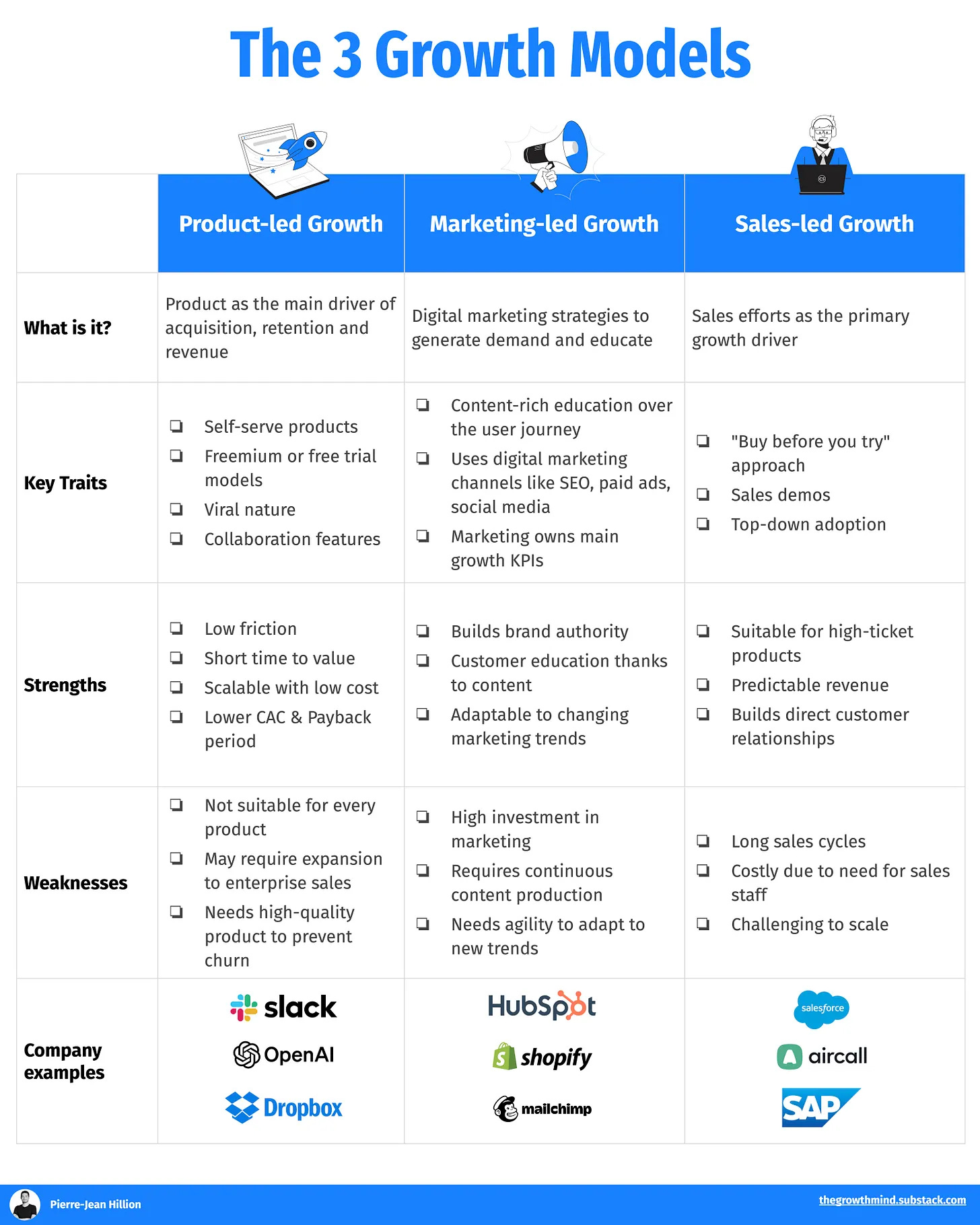
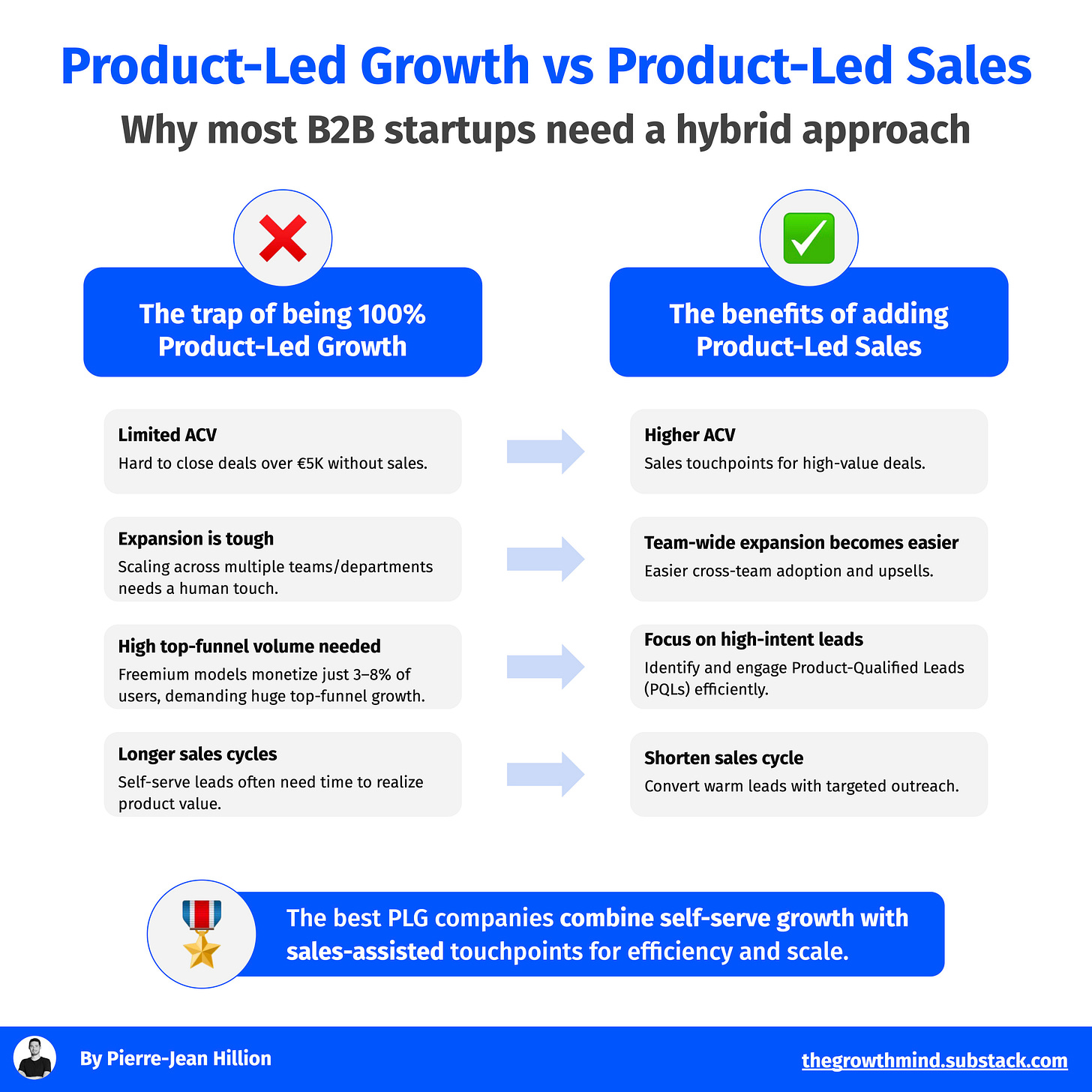

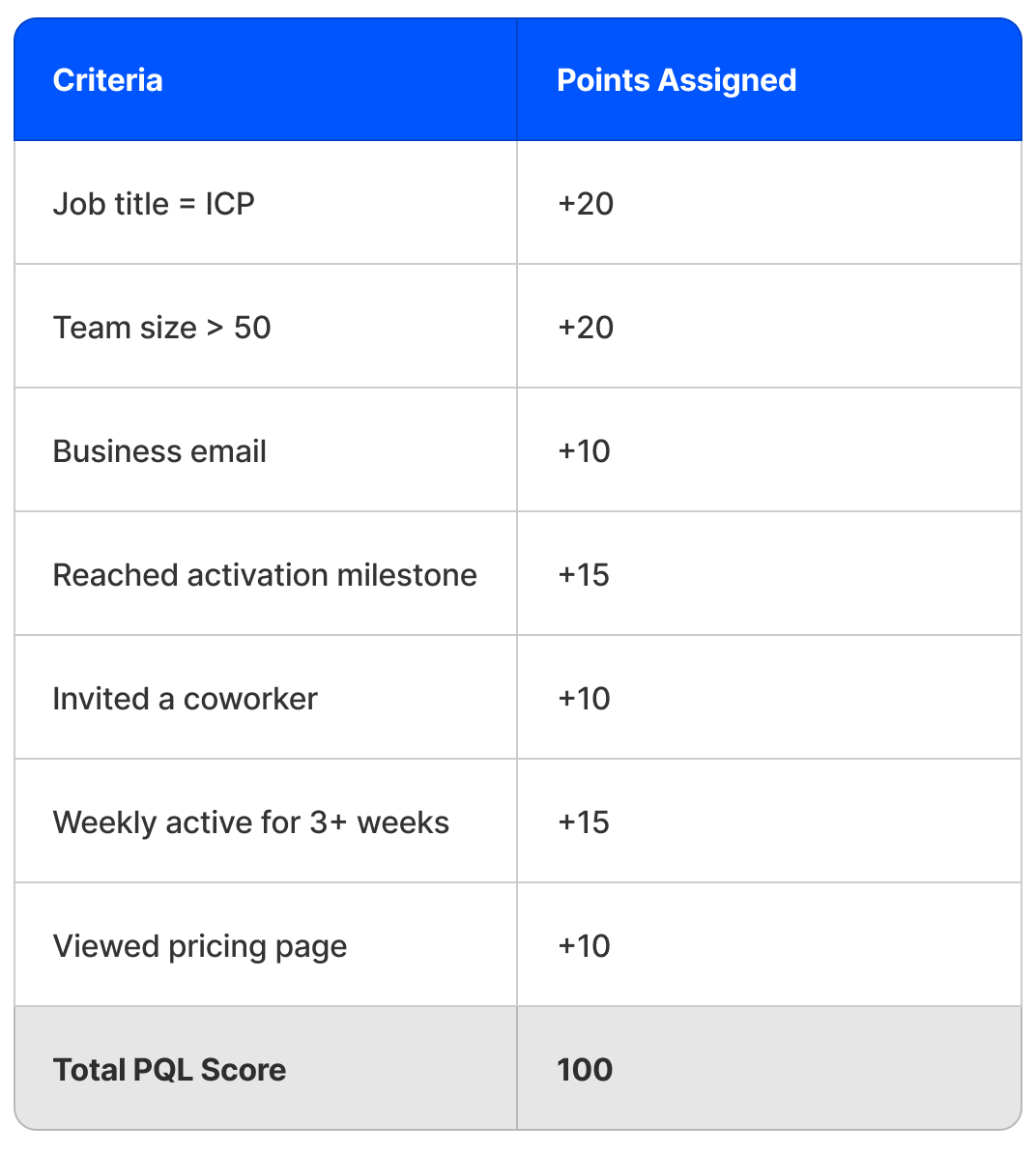

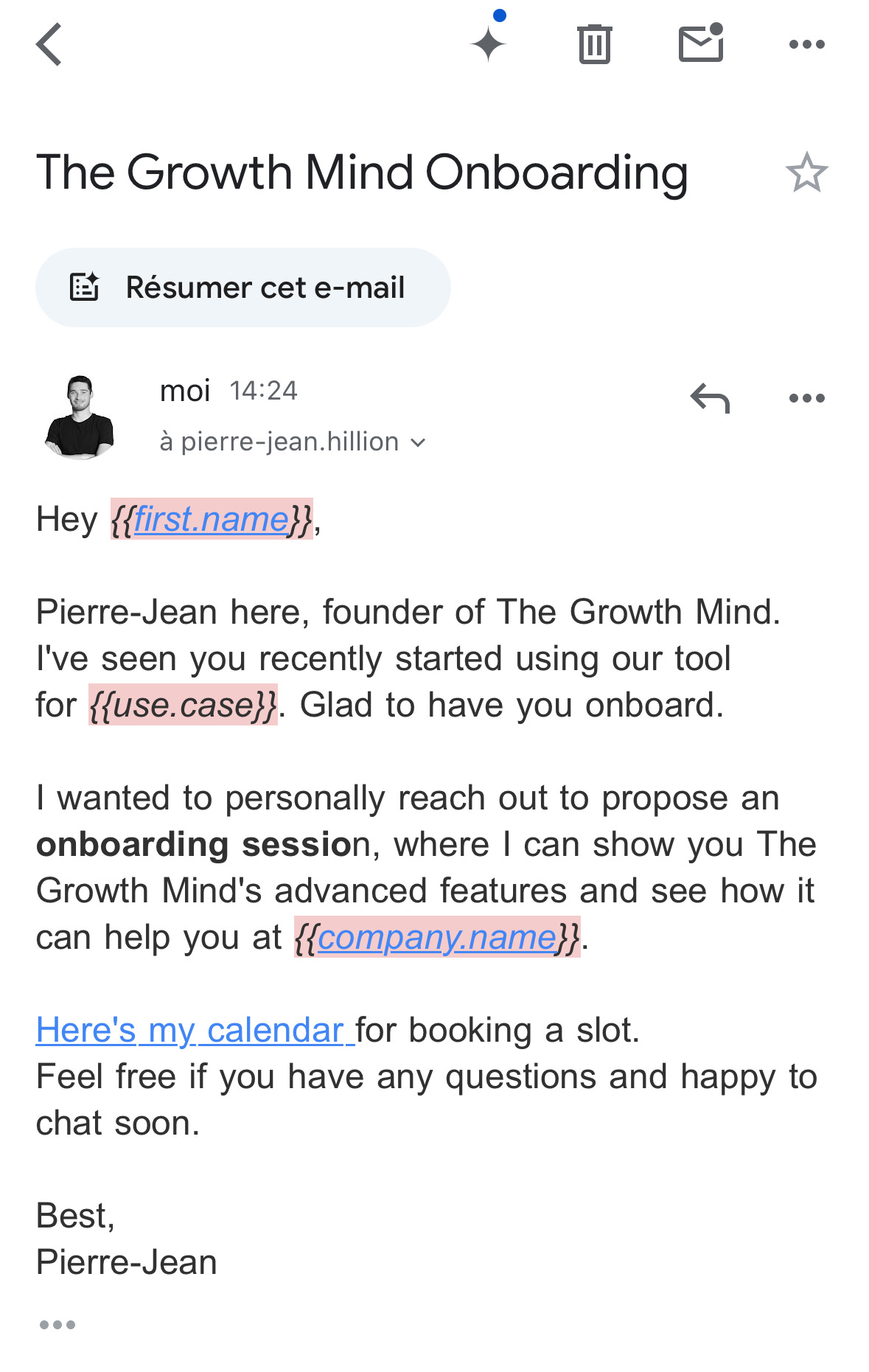
Welcome back! Congrats and good luck for your journey as a fractional :D
Good stuff. Glad to have you back!